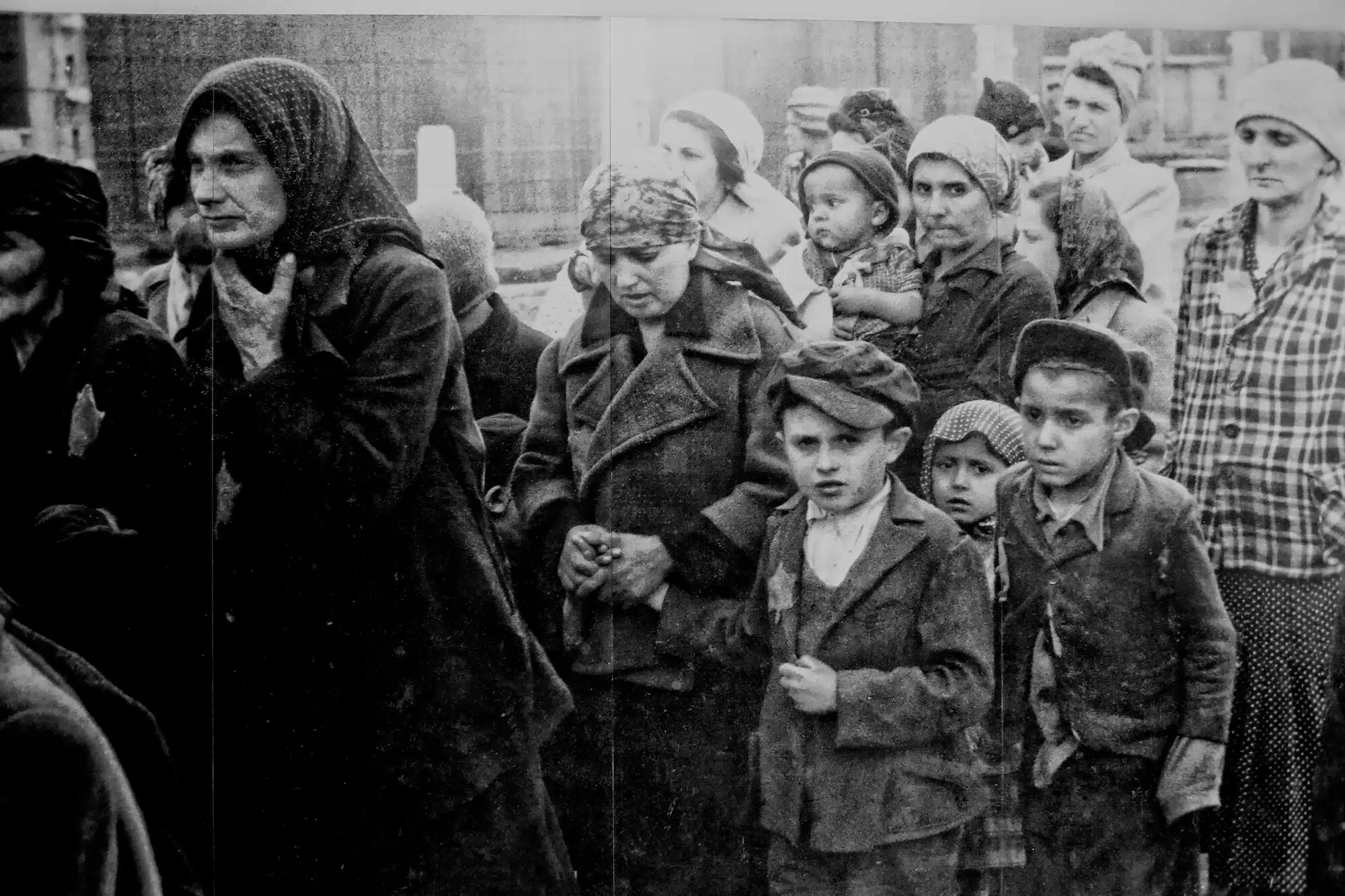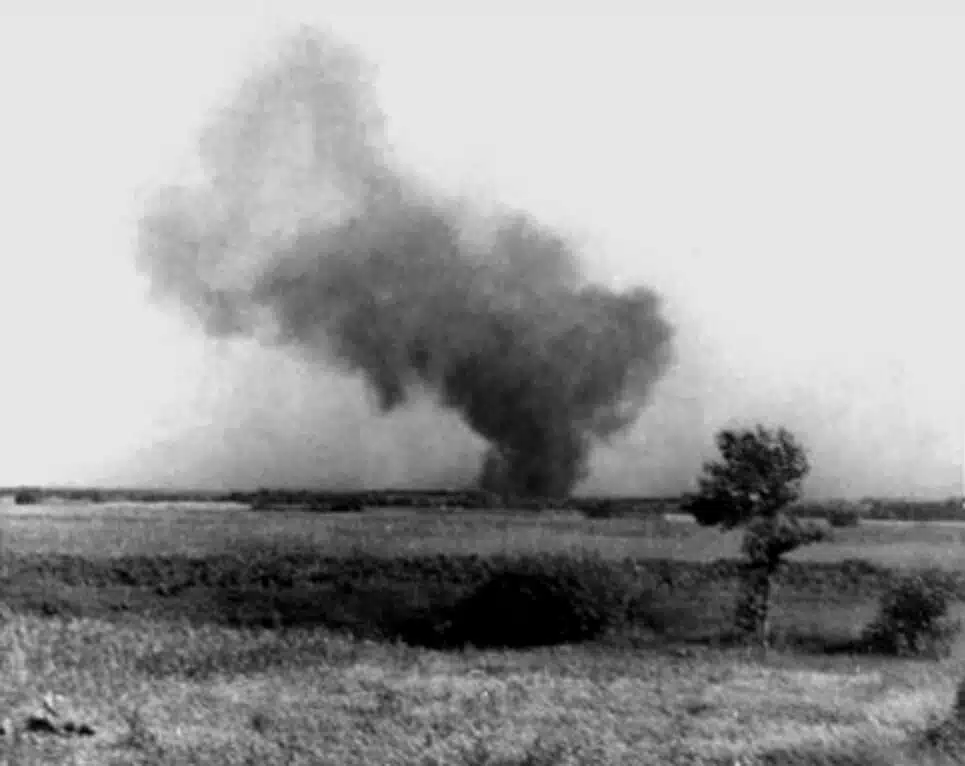Every Holocaust survivor had countless moments in which the story could have ended. The mutual aid - starting with food smuggling, and even in successful local resistance events
Chad Gibbs, Associate Professor of Jewish Studies, College of Charleston

Richard Glaser insisted that no one survived the Holocaust without help. For a Jewish survivor born in Prague, who was a prisoner of the Nazis in Treblinka and in Theresienstadt, plus years in hiding, it was impossible to get through the period without the support of others. Glazer admitted that some of his fellow Treblinka survivors were "loners", but however believed Because they "survived because they were helped by someone, someone who cared for them as much, or almost as much as they cared for themselves."
Helping someone else took many forms. for the Treblinka prisoner Shmuel Goldberg, a Polish Jew who was born in a small town called Bagatla, was the moment when the women of his work group stood up to a guard to save Goldberg's life. for those around Glazer, these were the times he brought them food because his status as a fence builder gave him opportunities to buy food outside the camp. More prisoners They were saved thanks to a friend who was willing to replace them during the shift so that no guard would notice that they were sick - an almost certain death sentence.
In a place destined to destroy all Jewish life, the smallest acts of support and comfort were the main form of resistance.
On August 2, 1943, the Treblinka II extermination camp in Nazi-occupied Poland took place One of the most dramatic acts of armed rebellion in the holocaust Several hundred prisoners managed to escape, but most were recaptured and murdered. However, at least 70 people survived to tell about what happened there. If not for their actions, we would likely know next to nothing about the history of the rebellion.
In the years of research on this extermination camp, I learned to attach great importance to the long trail of small deeds than to the famous day itself. Long before the uprising, resistance was commonplace in Treblinka. It had to be. Here and elsewhere, a prisoner revolt would not have been possible without those daily acts of support that laid the foundations for it.

Defiance and respect
Between July 1942 and November 1943 Nazi Germany murdered in Treblinka 2 About 925,000 people. The vast majority of these victims were Jews, although the regime also murdered several thousand Gypsies there.
This horrible place was different from most Nazi camps in that its whole purpose was the end of life. Unlike other camps, there were no slave labor industries or construction factories. The Jews responsible for the revolt were among the several hundred men and women kept alive to maintain facilities, sort the belongings of the dead, and dispose of the bodies. as he put it Historian Michael Birnbaum, Treblinka was "A factory whose final product was dead Jews".
In such a hell, life itself is resistance, but those held at Treblinka resisted the Nazi plans to destroy them by any means possible. Early organized efforts took the form of escapes to warn other Jews. Avraham Kashpitsky, for example, escaped from Treblinka and returned to the Warsaw ghetto to tell what the camp was really like - and later died there, fighting in the rebellion of 1943.
These messengers of truth helped expose the Nazi lies and give others a chance to try to hide, fight or jump trains.
However, most people targeted by the Third Reich could not avoid being transported to Treblinka or other camps, even if they knew what awaited them there. For some, resistance was the way they carried themselves on the road to certain death, like saying Prayers such as reading Shema Yisrael. They were convicted for being Jews, and remained so until the end.
Samuel Willenberg, who passed away in 2016 when The last survivor of the Treblinka uprising XNUMX, he remembered how a young woman named Ruth Dorfman only asked if the gas would hurt, and behaved calmly with such unwavering respect that many years later he felt the need to sculpt her last moments.
"Choices without choice"
Testimonies from the court, oral histories, memoirs of survivors and other sources They show that over months of concerted planning, the "organizing committee" of the Treblinka prisoners laid the foundations for the August Uprising by building a network of trusted men and women. The organizers found ways to put them in jobs that gave the revolt planners full access to the camp.
This process was a tortuous and dangerous road. Three previous plans failed, and Nazi guards killed many Jews they suspected of resistance. It took at least eight months of concentrated effort to to finally repel the rebellion.
Although the resistance at Treblinka ultimately meant a rebellion, it could not have achieved this goal without the countless smaller rebellions that came before it. This was also the case in Warsaw and throughout Nazi-controlled Europe. At its core, resistance is the way in which a person or a people chooses to face the challenges placed upon them. This is true even if those options are what Holocaust researcher Lawrence Langer called "choiceless choices” between one terrible result and another.
in the Warsaw ghetto, where hundreds of thousands of Jews were crammed into inhumane conditions, the residents supported each other by establishing special homes and secret schools, organizing waste removal to prevent disease, and organizing daily events to help people feel normal, even for a moment.
The Jews of Warsaw toiled to compile what happened to them and document the medical effects of the hunger they faced. Both acts demonstrated hope for a future that would remember their suffering and use its lessons to ease the pain of others.
Holocaust Day, the annual memorial day for the Holocaust set by the Israeli government, falls on the XNUMXth of Nisan in the Hebrew calendar: the beginning of great fighting during Warsaw Ghetto Uprising. Thousands died in the brutal retaliatory actions of the Germans.
A more complete picture
The full name of Holocaust Day is "Holocaust Remembrance Day" - which, together with its connection to the Warsaw Ghetto, ties memory to resistance in a way that is not ambiguous. This pairing was of great importance Israel's identity as a new state And to a nation that has been so deeply affected by years of terror.
Whenever we remember the Holocaust, we should remember the small rebellions, the individual actions and the small acts of caring that Glazer found so important. Only if we see the larger picture of the daily struggles can we understand the true diversity and scope of the resistance.
For the article in THE CONVERSATION
More of the topic in Hayadan:
- "By policing history, the Polish government distorts the Holocaust"
- Holocaust Day: Is man's nature evil from his youth? And maybe better than his youth?
- Stampanio: A glimpse into the normal life of the Jews in Europe before the Holocaust
- A 200-year-old Hebrew inscription was discovered in the excavations of the Great Synagogue in Vilnius
- How did we miss one of the most important lessons from the Holocaust?

One response
I wonder if it was theoretically possible for hundreds of thousands of Jews to organize for partisan fighting against the Germans.
Like the partisan fighters but on a significantly larger scale.